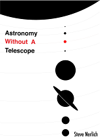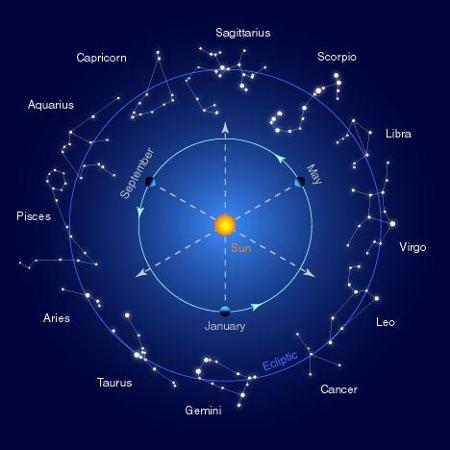Constellations
|
Constellations are just a rough way of mapping out the sky—and most southern-sky Cheap Astronomers only bother learning three. The perennial Southern Cross, Orion’s belt in the summer months and Scorpius in the winter. Southern Cross (good all year round)
Orion’s Belt (for the late evening Summer-Autumn southern skies)
Zodiac constellations There are 12 constellations along the ecliptic which, excepting Scorpius and Capricornius, share the same name as the 12 star signs used in horoscopes. Cheap Astronomy considers astrology to be a load of old bollocks, but there is a certain interest value in what is known as the zodiac. Derived from ancient Greek, zodiac roughly translates as the path of the animals. It is a path across the sky including the ecliptic (the path of the sun through the sky) with a bit of leeway either side to incorporate the paths of the Moon and the planets. So in defining the zodiac, classic civilizations recognised that the planets (not that they knew about Uranus or Neptune), the Moon and the Sun moved against the constant background of the stars along a defined path which passed in front of a group of constellations (the ‘animals’). This likely included Virgo and Gemini, but didn’t include Libra which was defined as a separate constellation in Roman times, possibly to align with the twelve months of the Julian calendar. How these older civilization’s practical representations of naked eye astronomy morphed into the mumbo-jumbo of astrology is hard to fathom. The arbitrary nature of constellations, which are generally an unrelated collection of stars forming a vague pattern in our sky, provides no basis for attributing magical effects to birthdays. Anyway, if only as a way to remember a bunch of additional constellations, the zodiac is as follows, tracking across the ecliptic from west to east. (West) Scorpius, Sagittarius, Capricornius, Aquarius, Pisces, Aries, Taurus, Gemini, Cancer, Leo, Virgo, Libra (East) |
|
Another constellation, Ophiucus, is considered to have crept in between Scorpius and Sagittarius since the original 12 constellations were agreed upon. This may have occurred over thousands of years, due to the proper motion of stars, precession of the Earth’s axis, or otherwise just a lack of agreement of the specific boundaries of adjacent constellations. |








